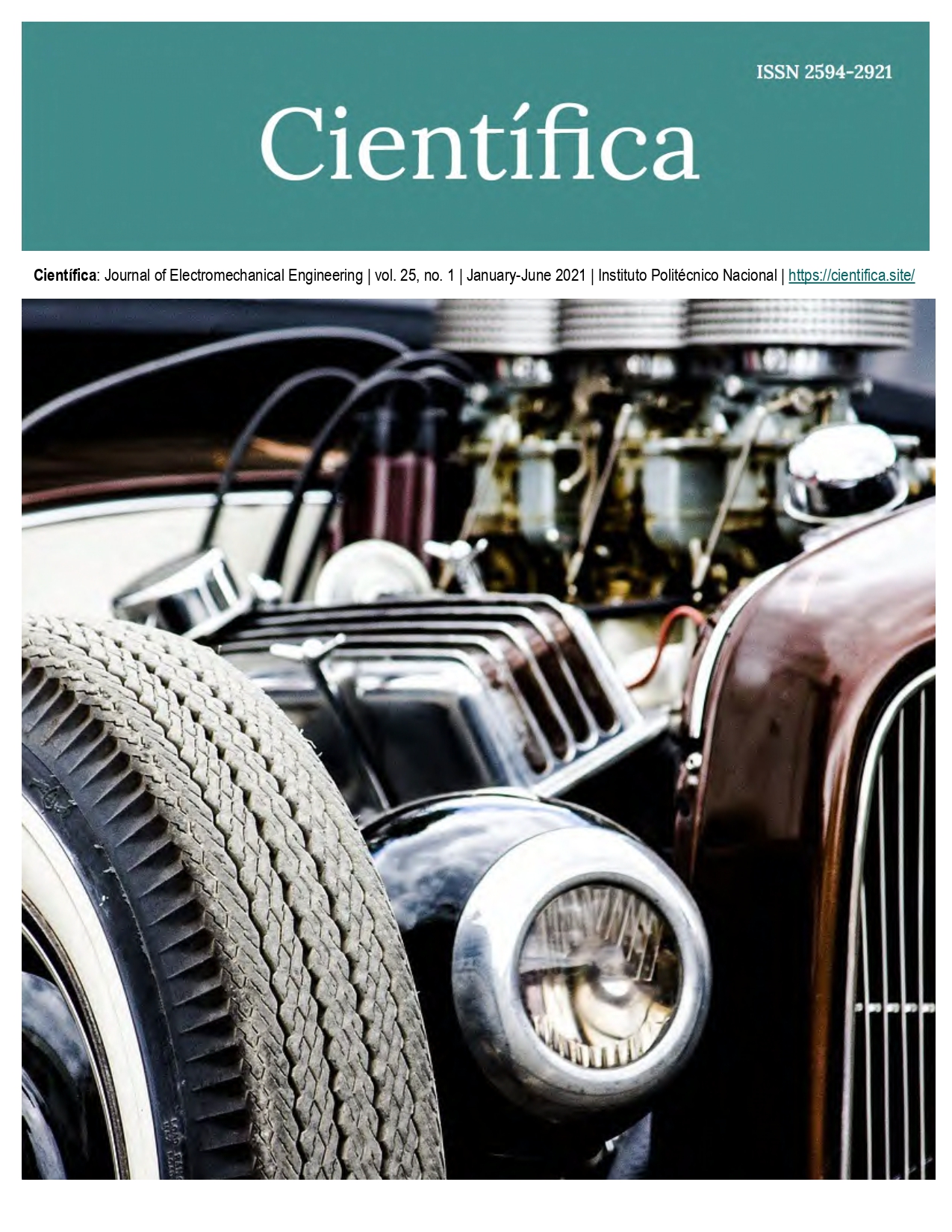Failure Analysis on Metallic Thread Rolls
DOI:
https://doi.org/10.46842/ipn.cien.v25n1a08Keywords:
carbides, microstructure, alloy elements, fractureAbstract
A failure analysis using characterization techniques on a mechanical element called Rol was done; designed to make internal ropes with arrows, the material of the mechanical element is an AISI M5 steel. Visual analysis of the part, penetrating liquids, HRC hardness, optical microscopy and scanning electron microscopy to determine the cause of its failure in service. The study shows that failure occurred due to mechanical fatigue. In the area around the periphery of the role, there are areas with irregular carbides in the matrix with irregular hardness and presence of microstructural changes. A crack is presented in periphery role; this leads later to the collapse and fracture of the role. With characterization techniques, the diverse factors that caused the fracture are determined, as well as the results of the metallurgical studies, concluding that the thermal treatment is not optimal.
References
American Society for Metals, Engineering Aspects of Failure and Failure Analysis, Failure Analysis and Prevention, vol 10, 8th ed., Metals Handbook, 1975.
J. J. Asperger, Legal Definition of a Product Failure: What the Law Requires of the Designer and the Manufacturer, Proc. Failure Prevention through Education: Getting to the Root Cause, 23–25 May 2000 (Cleveland, OH), ASM International, 2000, p 25–29.
N. López-Perrusquia, M. A. Doñu-Ruiz, J. V. Suarez-Cortez, D. Sánchez, F. Vázquez. Characterization of the Fracture of an Automobile Drum, Bra. MRS Proceedings, 1372, pp. 3-13, 2012, doi: https://doi.org/10.1557/opl.2012.112
M. A. Doñu-Ruiz, N. López-Perrusquia, V. J. Cortés-Suárez, S. A. Pérez-Moo, J. C. Vargas-Caballero, “Análisis de un sistema homogenizador de jugo de naranja,” Científica, vol. 21, núm. 2, pp. 107-112, julio-diciembre 2017.
G. H. Farrahi, H. Ghadbeigi, “An investigation into the effect of various surface treatments on fatigue life of a tool steel,” Mater Process Technol., vol. 174, pp. 318-324, 2006, doi: https://doi.org/10.1016/j.jmatprotec.2006.01.014
A. Persson, S. Hogmark, J. J. Bergström, “Temperature profiles and conditions for thermal fatigue cracking in brass die casting dies,” Mater Process Technol., vol. 152, pp. 228-36, 2004, doi: https://doi.org/10.1016/j.jmatprotec.2004.04.241
R. Ebara, K. Takeda, Y. Ishibashi, A. Ogura, Y. Kondo, S. Hamaya, “Microfractography in failure analysis of cold forging diez,” EngFail. Anal., vol. 16, pp. 1968-1976, 2009, doi: https://doi.org/10.1016/j.engfailanal.2008.10.023
L. Pelcastre, J. Hardell, N. Herrera, B. Prakash, “Investigations into the damage mechanisms of form fixture hardening tools,” Eng Fail Anal., vol. 25, pp. 219-226, 2012, doi: https://doi.org/10.1016/j.engfailanal.2012.05.014
W. Zhua, S. Cruchley, W. Yina, X. J. Hao, C. L. Davis, A. J. Peyton, “Examining the effects of green supply chain management practices and their mediations on performance improvements,” NDT&E International, vol. 46, pp. 63-69, 2012, doi: https://doi.org/10.1080/00207543.2011.571937
R. G. Baggerly, R. A. Drollinger, “Determination of decarburization in steel,” Journal of Materials Engineering and Performance, vol. 2, pp. 47-50, 1993, doi: https://doi.org/10.1007/BF02649673
Downloads
Published
Issue
Section
License
Copyright (c) 2021 Instituto Politecnico Nacional

This work is licensed under a Creative Commons Attribution-NonCommercial-ShareAlike 4.0 International License.

